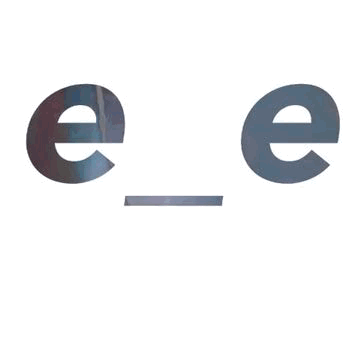
~
So how is it that I understand sound? Well, I watch how people behave and respond to sound. You people are like my loudspeakers, and amplify sound. I learn and mirror that behavior. At the same time, I've learned that I create sound, and I've seen how people respond to me. Thus I've learned, for example ... "Don't slam the door!" "Don't make too much noise when you're eating from the potato-chip bag!"
02:31 (Laughter)
> ‘She’s creating her own language’: Christine Sun Kim’s unique sound art
> With Sign Language and Sound, an Artist Upends Audience Perceptions
> Artist Christine Sun Kim Rewrites Closed Captions | Pop-Up Magazine
> DISARMING LANGUAGE: disability, communication, rupture - In our view, language and communication, instead of being considered universal systems of knowledge and expression, should be viewed as hyper-specific, ever-evolving fields of experience, which must gain priority over official and legal definitions. In “disarming” the stability of language and communication, we seek to render it problematic as straightforward systems of knowledge and power, and to create a rupture which allows future possibilities for disability awareness to emerge.
AO: I never have. It’s mind-boggling to learn a language and find out that your native language doesn’t have a term for something that exists as a whole constellation of ideas in another culture or language. And you can’t help but wonder what all you’ve missed by not knowing or conversing in this way. Of course, it’s not better. It’s just different. I really resist any hierarchy between the two languages. To have lived my life without access to all sound, but still have prioritized sound and spoken language feels, in hindsight, a bit like a bummer. But it’s new, and so I am in that beautiful stage when you are turning a word around and viewing it from every angle… and in sign language that is literally what is happening.
https://alisonodaniel.com/HOW-TO-CAPTION >>>>
USE BRACKETS AROUND A DESCRIPTION OF SOUND.
DESCRIBE THE SOUNDS CLEARLY and SUCCINCTLY.
CONSIDER YOUR CAPTIONS AN INTERPRETATION OF MOOD IN SOUND DESIGN.
TRY TO MIRROR THE TIME THE SOUND TAKES UP, WITH THE AMOUNT OF DESCRIPTION:
[ Quick, anxious bird chirps. ] YES
[A succession of quick, evenly paced, high pitched, anxious bird chirps.] NO.
(Thank you for the detail, but this can get really overwhelming.)
DON’T BE TOO SUBJECTIVE:
[The phone trills like my grandmother’s voice.] NO.
[The phone trilllllllls.] YES. fun!
DON’T BE BORING IF THE SOUND IS EXCITING / DON’T DESCRIBE WHAT WE CAN ALREADY SEE:
[A razor buzzes.] NO.
[Relentless, irritating drone.] YES.
TRY NOT TO BE CONFUSING. (It is hard to describe sound.)
Alison O’Daniel is hard of hearing herself. For her art, she works together with hearing, deaf, and hard of hearing people. Alison O’Daniel has experienced herself: How does it feel not to hear some information? What gaps does it create? This experience is part of her art. She deals with the question: How can we take in information in other ways? How do we see, hear, and feel this information?
….The exhibition space of the Kunsthalle is situated in an old church. The sound there is special. There is a strong echo. This special feature is part of the installation.
….she asked a group of deaf and hard of hearing people from Osnabrück for support. They spent time in the exhibition space. They took in the sounds of the space. They captured their impressions. In drawings. Or movements. Out of these impressions, Alison O’Daniel created a big carpet. This carpet relates to misunderstandings. The reason for these misunderstandings are barriers. In addition to the carpet there will be a video work. The sound of the video will be coming from various loud speakers. The speakers are dispersed throughout the room. TEXT FROM HERE
The term was coined by Athena Lynn Michaels-Dillon and Nick Walker.
Text from www.queerundefined.com/search/neuroqueer ///

.jpg)


